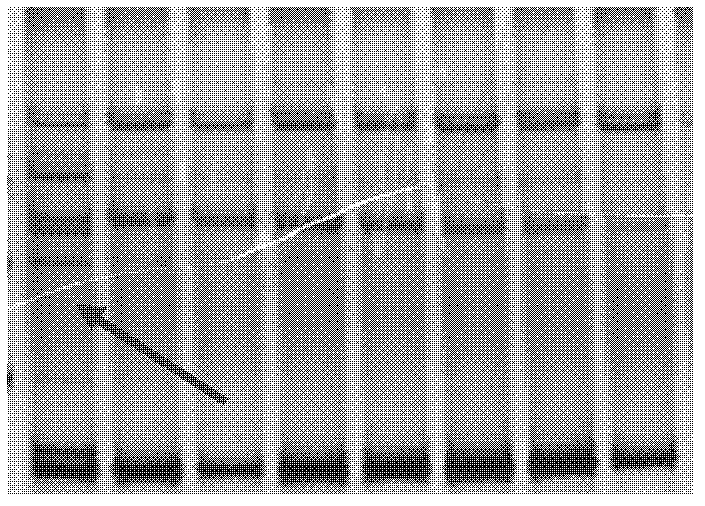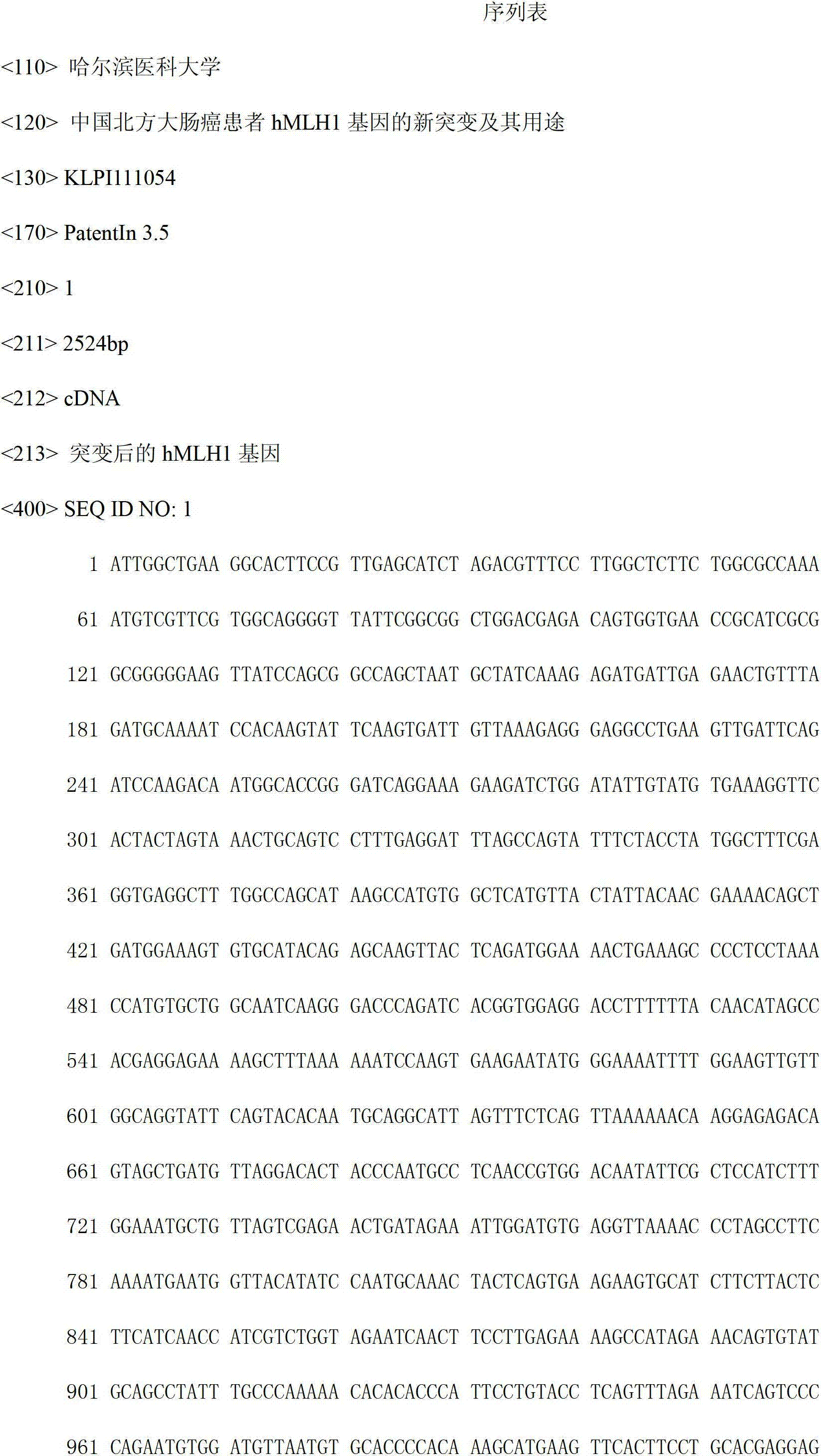New mutation of hMLH1 gene of colorectal cancer patients in north China and use thereof
A colorectal cancer and genetic technology, applied in the direction of genetic engineering, plant gene improvement, application, etc., can solve the problem of unreported mutations
- Summary
- Abstract
- Description
- Claims
- Application Information
AI Technical Summary
Problems solved by technology
Method used
Image
Examples
Embodiment 1
[0035] (1) DNA extraction from tissue samples by saturated phenol chloroform method:
[0036] ① Grind the resected rectal cancer tissue of a sporadic colorectal cancer patient with liquid nitrogen, add 4ml TES buffer solution, 250μl 10% SDS solution, 50μl 20mg / ml proteinase K solution to the ground tissue powder, mix well, Disperse the aggregated leukocytes; keep the temperature in a water bath at 56°C for 2 hours.
[0037] ② Add an equal volume of saturated phenol, repeatedly and slowly invert the centrifuge tube, and mix the two phases to form an emulsion.
[0038] ③ Centrifuge at 5000 rpm, 4°C, for 15 minutes.
[0039] ④ Use a large-bore straw to absorb the viscous aqueous phase (upper layer) and transfer it to another clean centrifuge tube.
[0040] ⑤ Repeat steps ②, ③, ④.
[0041] ⑥ Add an equal volume of chloroform-isoamyl alcohol (volume ratio: 24:1) solution, slowly invert the centrifuge tube repeatedly, and mix the two phases to form an emulsion. Repeat steps ③, ④...
PUM
 Login to View More
Login to View More Abstract
Description
Claims
Application Information
 Login to View More
Login to View More - R&D
- Intellectual Property
- Life Sciences
- Materials
- Tech Scout
- Unparalleled Data Quality
- Higher Quality Content
- 60% Fewer Hallucinations
Browse by: Latest US Patents, China's latest patents, Technical Efficacy Thesaurus, Application Domain, Technology Topic, Popular Technical Reports.
© 2025 PatSnap. All rights reserved.Legal|Privacy policy|Modern Slavery Act Transparency Statement|Sitemap|About US| Contact US: help@patsnap.com



